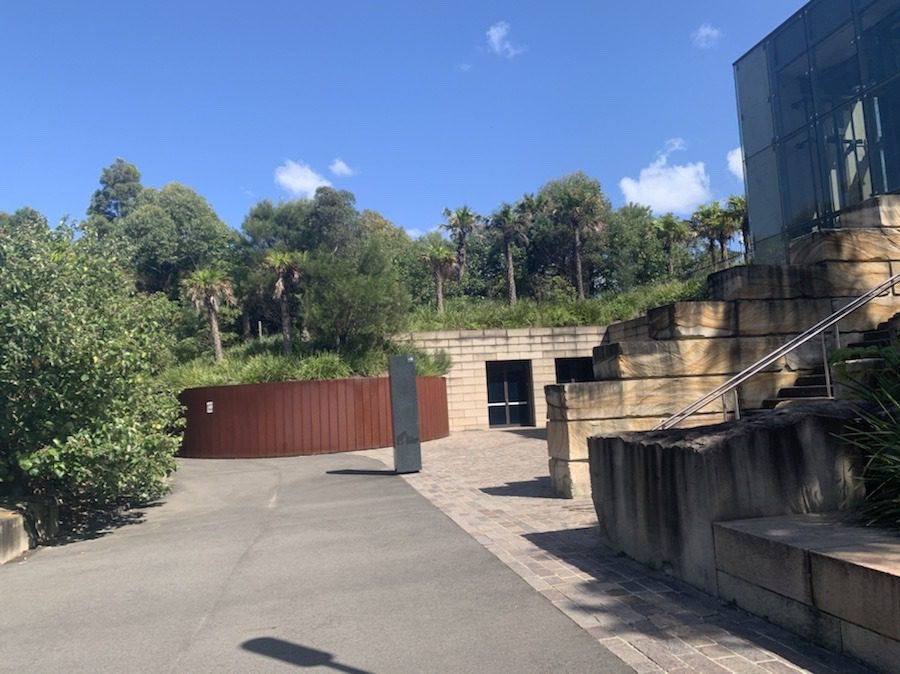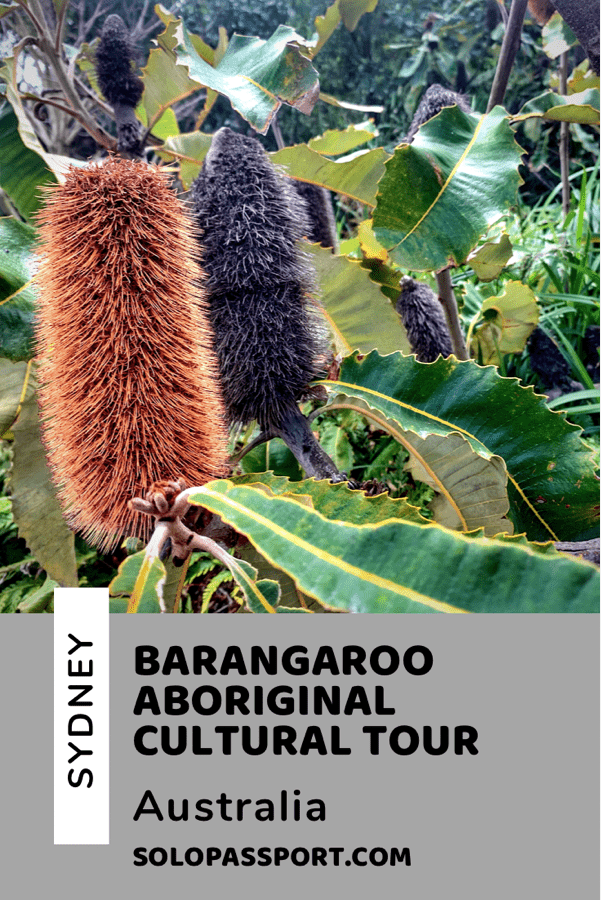Discover Sydney’s Rich Heritage: Barangaroo Aboriginal Tour (2024)
Embark on a captivating journey through Sydney’s history with the Barangaroo Aboriginal Tour. Immerse yourself in the rich cultural heritage of the area as knowledgeable guides unfold the stories of the Aboriginal people who called this land home for generations. Discover ancient traditions, explore significant sites, and gain insights into the deep connection between the indigenous communities and the stunning landscape.
Among the most enriching cultural tours I have experienced in Sydney is the Barangaroo Aboriginal Cultural Tour. Centred on the Aboriginal heritage, this immersive journey guides visitors through the Barangaroo reserve, delving into the significance of various plants in Aboriginal society. The knowledgeable guide not only shares insights into plant life but also unfolds the intricate history of Barangaroo, offering a comprehensive understanding of the indigenous culture in this captivating tour.
Page Contents
PIN for later reference – Barangaroo Aboriginal Tour
This article may contain affiliate links, meaning if you decide to purchase via my links, I may earn a commission at no additional cost to you. For complete information, please see our affiliate disclaimer here.
What is the Barangaroo Aboriginal Cultural Tour?
Led by Aboriginal guides, the Barangaroo Aboriginal Cultural Tour spans 1 hour and 30 minutes, immersing visitors in various facets of the Barangaroo Reserve. Throughout the duration, the guide passionately narrates the rich tapestry of Aboriginal history and culture, explicitly emphasising the practical applications and benefits of native plants. The exploration extends to discussions about the revered elders from different tribes.
Personally guided by the brilliant Tim Gray, whose profound knowledge enhanced the experience, this tour provides a captivating glimpse into the depth of Aboriginal heritage.
How to Get to the Starting Point?
The designated meeting point is at the entrance of Munn Street Reserve. It’s common for individuals to wait on a lower level for the guide mistakenly.
To avoid confusion, please refer to Google Maps for accurate directions or approach the welcoming staff at Barangaroo, who will gladly assist you.

By Public Transport
The nearest train station to Barangaroo Reserve is Wynyard Train Station, a prominent transportation hub in Sydney. Regular train services link various stations within the Sydney Central Business District, and Wynyard is a crucial stop for trains connecting to different parts of the city.
- Refer to the Transport for New South Wales (TfNSW) website for the latest information.
- Fares can be paid using Opal transportation, credit, or debit cards. Remember to tap on and off when entering and exiting train stations.
You can also walk from Darling Harbour to Barangaroo Reserve. It is an easy walk with beautiful views of the harbour.
By Road
The distance from Sydney CBD to Barangaroo Reserve is a mere 1.5 kilometres, requiring just a brief 5-minute drive. Conveniently, there are several levels of car parking facilities at Barangaroo Reserve.
Booking and Cost
Booking is a simple process and can be completed on the Barangaroo official website. Two tours are scheduled daily, one at 10:30 in the morning and another at 1:30 in the afternoon. The ticket price for the 90-minute tour is AUD 36.30 per adult.
- Please note that children (17 years and under), seniors, and concession card holders are eligible for discounted ticket rates.
My Review
Reiterating from my initial remarks, the Barangaroo cultural tour stands out as one of the finest excursions I’ve enjoyed in Sydney. Tim Gray, our guide, demonstrated exceptional knowledge, enhancing the overall experience. Exploring various sections of the reserve, we absorbed captivating stories and history. The tour’s excellence was further amplified by the active participation of the entire group, sharing their experiences and insights. Without a doubt, I highly recommend embarking on this enriching tour.
Who was Barangaroo?
Barangaroo Reserve pays homage to the influential leader Barangaroo, a powerful figure during the European colonisation era. Hailing from the Cammeraygal clan, situated around the north harbour, she was renowned for her strength, wisdom, and significant influence.
The Cammeraygal clan, part of the Eora tribe of Indigenous Australians, shared a common language and inhabited the Lower North Shore of Sydney.
Barangaroo’s story carries a touch of sorrow. Her first husband succumbed to smallpox, and later, she married Benelong, a Wangal man. Abiding by tradition, she insisted on giving birth to Benelong’s child without seeking hospital care, tragically passing away shortly after childbirth.
The Wangal people, also part of the Eora tribe, were among the first to encounter British settlers.
Despite her relatively short life, Barangaroo left an indelible mark on Sydney’s history, known for her fierce independence.
Interestingly, did you know that Benelong Point (Circular Quay, named after Benelong) is adjacent to Barangaroo? This deliberate proximity, a decision by the government, reflects a beautiful sentiment of keeping the husband and wife together in history.
Plants and their Benefits
It is pretty surprising, but I had never found much interest in plants before this tour. The tour was exceptionally captivating, sparking a newfound curiosity that led me to delve into the intricate world of Australia’s native flora.
Lomandra
Lomandras is one of Australia’s native and widely recognized plants, easily identified by their spiky, long, and flat green leaves. Aboriginal tribes have ingeniously utilized these plants in various ways, including:
- Weaving: The dried leaves are skillfully woven into ropes, showcasing the resourcefulness of Aboriginal craftsmanship.
- Seeds: Not only is the plant visually striking, but it also provides sustenance. The seeds are crushed and utilized to create traditional breads, demonstrating the plant’s versatility in Aboriginal cuisine.
Due to its spiky leaves, this plant is believed to be highly favoured by snakes as an optimal nesting site. The spiky foliage provides a secure environment for snakes to lay their eggs, offering protection against potential predators, particularly birds.


Old Man Banksia
Banksia, a renowned Australian plant, is distinguished by its striking flower spikes, cones, and heads. Despite their slow growth, these plants are characterized by their impressive longevity, reaching heights ranging from 30 to 60 feet.
One captivating tale within the realm of Banksia involves the intriguing story of Old Man Banksia. It is said that the wild landscapes of Australia harbour hairy creatures called Yowies, resembling these Banksias. These creatures come in two types—short and tall. There are anecdotal accounts from truck drivers and Outback residents claiming to have spotted these enigmatic beings.

Remarkably, the world of Banksia encompasses more than 173 species, contributing to Australia’s rich biodiversity.
Native Hibiscus
The native hibiscus stood out as the most exquisite among all the plants, adorned with blooming flowers in vibrant shades of yellow and orange. Beyond its aesthetic appeal, the robust bark of the hibiscus serves practical purposes among Aboriginal tribes. Traditionally, it is employed as a tool for fishing, a task typically undertaken by women. The durable barks and branches also find utility in creating friction fires, showcasing the plant’s multifaceted significance in Aboriginal practices.
Australia boasts an impressive variety of hibiscus, with 35 of the 250 species native to the region.

Wattle Seed Plant
Australia is home to numerous species of Wattle seeds, known for their rapid growth and edible properties. The leaves of these plants serve a fascinating dual purpose in Aboriginal fishing techniques.
When combined with water, the leaves produce a lather that, upon contact, temporarily paralyzes fish. This ingenious method showcases the resourcefulness of Aboriginal communities, utilizing the natural attributes of Wattle for both sustenance and traditional fishing practices.

Pig Faceplant
The pig face plant, characterized by its succulent leaves and ground-creeping nature, boasts large daisy-like flowers and is recognized as an edible bush plant. In Australia, locals incorporate the stems into salads, although boiling or cooking them beforehand is essential. I tried the raw stem, and to my surprise, it tasted extremely bitter.


And Many More
Barangaroo is home to an impressive array of 75,000 plant and tree species. For those passionate about botany, visiting the Barangaroo Reserve offers a unique opportunity to immerse oneself in the diverse and rich world of plants, providing a delightful experience of observation and appreciation.
Other Things to See in the Reserve
Were you aware that Aboriginals ingeniously utilized crushed shellfish bones as a mortar for binding sandstone bricks together?
Bee Nests
At the Barangaroo Reserve, native bee colonies, specifically the “Tetragonula Carbonaria,” have been introduced to enhance pollination of native plants. In the image below, you can observe one of the nests within the sandstone, while the second nest is located in the box just behind the sandstone.

Cutaway
The Cutaway stands as a distinctive cultural space carved beneath the headland. Sandstone extracted from this site was utilized in the reserve, employing traditional stonemason techniques for its extraction.


Heritage Toilet
The heritage-listed toilet at Barangaroo served as a pump station in the past, adding a unique historical element to the site. It’s rare to encounter such a listed toilet, and visitors can appreciate its heritage significance. Additionally, it’s worth noting that the toilet facility is available during the tour if needed.
Munn’s Slipway
Munn’s slipway is a significant historical landmark within Barangaroo Reserve, featuring sandstone dating back to the 1820s. To preserve its historical significance, the slipway was seamlessly integrated into the new shoreline of the reserve. At the project’s outset, archaeologists unearthed this slipway’s remains during the initial excavations, further highlighting its historical importance.


Sandstone
The sandstone utilized in the reserve is sourced directly from the Cutaway within Barangaroo. Extraction, spanning approximately a year, involved using a custom-made 12D computer to intricately slot the sandstone pieces, resembling a jigsaw puzzle, before their placement in the reserve. Notably, every grain of extracted sandstone was dedicated to the reserve’s construction. The finished project boasts an impressive collection of 10,000 of these meticulously crafted sandstone blocks in Barangaroo Reserve.

View of Sydney Harbour Bridge
Barangaroo Reserve offers one of the most breathtaking views of the Sydney Harbour Bridge. The vantage point captures the iconic bridge and provides a sweeping panorama of Sydney to the north, enhancing the visual spectacle.

Wellama Installation
Situated at the Cutaway’s entrance lies a captivating visual art installation named Wellama. Crafted by Alison Page and Nik Lachajczak, this 10-minute video recording holds significant cultural meaning. “Wellama,” meaning “to come back,” serves as a warm greeting from the First Peoples, inviting visitors to honour and respect the country’s traditional culture.

Closing Notes
I strongly recommend taking this tour as it offers a profound insight into Aboriginal culture and history. I thoroughly enjoyed it, and I believe anyone with an appreciation for cultural tours would find it equally fascinating.
Have you had the opportunity to embark on Aboriginal tours? Feel free to share your experiences by reaching out to me at Solopassport@gmail.com.
How can you support me?
You know how much I love coffee, so you can buy me a coffee – Buy me Coffee!
Or you can purchase from one of the below travel resources without any extra charge to you:
Travel Resources
Book your flight on Skyscanner.com or Trip.com
Reserve your accommodation on Stay22
Reserve your stay at a hostel on HostelWorld
Use RentalCars or DiscoverCars for hiring self-driven cars
Book your tours and travels or purchase tickets on Viator or GetYourGuide
For a universal SIM card, use DrimSim
Buy comprehensive travel insurance on SafetyWing and WorldNomads
If you liked this article and if it was helpful in your planning or travelling, do share, tweet, or pin this post.
Follow me on Instagram | Facebook | YouTube | Twitter | LinkedIn
Do you have a question? Do you want any suggestions and tips for travel, hikes, and scuba dives? Use the Subscription box below to sign up and get updates by email.






